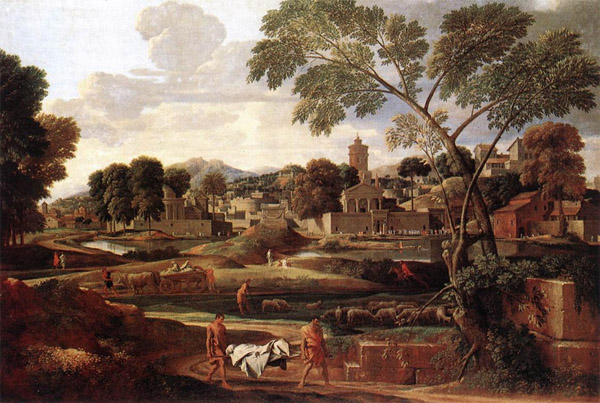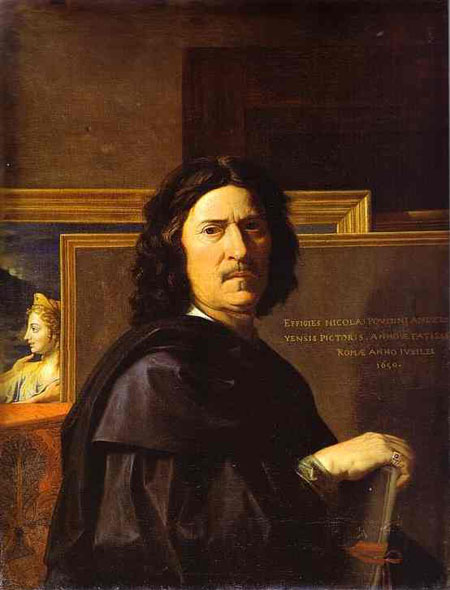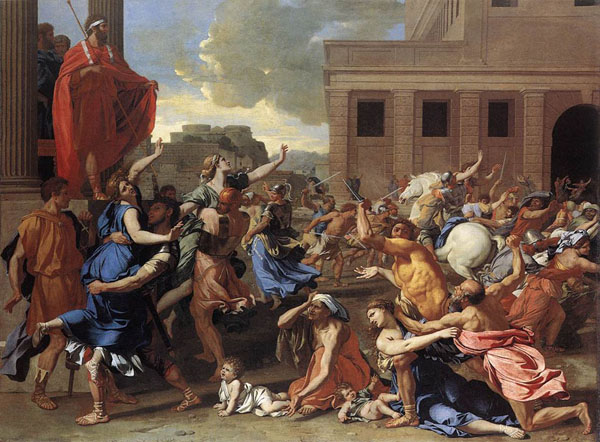Poussin -- The Inspiration for French Classicism
Nicolas Poussin (1593/4-1665) helped establish the dominance of classicism in French art. Although he lived two centuries before the period that we are studying, and French painting experienced many changes in this period, the general principles captured in his work remained very powerful in the official art world that dominated Paris' art world for most of the 19th century. This passage from H.W. Janson's influential History of Art can help you understand some of the values in French art in the late 19th century.
| "The greatest French painter of the century, and the earliest French painter in history to win international fame, Poussin nevertheless spent almost his entire career in Rome. . . The highest aim of painting, he believed, is to represent noble and serious human actions. These must be shown in a logical and orderly way -- not as they really happened, but as they would have happened if nature were perfect. To this end the artists must strive for the general and the typical; appealing to the mind, rather than the senses, he should suppress such trivialities as glowing color, and stress form and composition. In a good picture, the beholder must be able to "read" the exact emotions of each figure, and relate them to the given event. Poussin even painted landscapes according to his theoretical view, with surprisingly impressive results. The Landscape with the Burial of Phocion follows the traditional Annibale Carracci's 'ideal landscapes,' but the careful order of its spaces are almost mathematically precise." |
Nicolas Poussin, Funeral of Phocion (1648)
|
Nicolas Poussin, Self-Portrait (1650) |
Nicolas Poussin, The Abduction of the Sabine Women (c.1633–34) |


